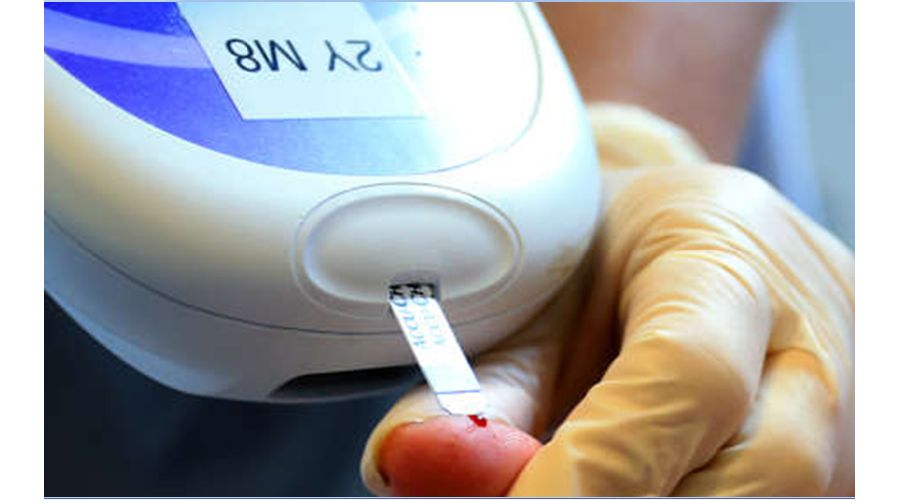20 July 2022
By Lauren Wellbank
Whether you have elevated blood sugar numbers and have been told you’re borderline diabetic, or you have a family history of type 2 diabetes, chances are you’ve heard the phrase: prediabetes. While receiving a diagnosis of prediabetes isn’t necessarily a sign that you will eventually develop type 2 diabetes, it’s a good indicator that something is going on internally. And for some people, recognizing prediabetes symptoms can lead to making major changes (like dietary and overall lifestyle) to help them avoid moving from the pre-diabetic stage to type 2 diabetes.
While high blood sugar (hyperglycemia) definitely has some telltale signs, not everyone will be able to recognize the signs of prediabetes. We spoke with two endocrinologists to find out prediabetes symptoms and preventative measures you could be taking to help mitigate your chances of developing type 2 diabetes.
What is prediabetes?
Prediabetes refers to blood sugar (plasma glucose) levels that are higher than normal but do not meet the criteria for types of diabetes, explains Aleem Kanji, M.D., Endocrinologist, Ethos Endocrinology, PLLC. The American Diabetes Association (ADA) considers people who meet one of three specific criteria to be prediabetic:
· Fasting Plasma Glucose 100 mg/dL-125 mg/dL
· Two-hour Plasma Glucose during 75-gram Oral Glucose Tolerance Test (OGTT) 140 mg/dL-199 mg/dL
· Hemoglobin A1c 5.7 % to 6.4 %
Those diagnosed with prediabetes may have an increased risk of developing type 2 diabetes and cardiovascular disease, such as heart disease, explains Dr. Kanji. “Prediabetes can remain unrecognized for years,” he says. “Prompt diagnosis and treatment [are] necessary to prevent the progression to diabetes and reduce the risk of cardiovascular disease.” If you think you’re suffering from prediabetes, you should reach out to your primary care physician to talk about your symptoms and testing options immediately.
Prediabetes symptoms
Unfortunately, there is no checklist when it comes to determining if you’re experiencing some of the early signs of diabetes because prediabetes does not have any overt (or clinically obvious) symptoms, according to Benjamin U. Nwosu, M.D., Chief of Endocrinology, Cohen Children’s Medical Center in New York, and Researcher at the Feinstein Institutes for Medical Research.
That can make it hard for the average person to know if their blood sugar has reached those concerning markers without the aid of a blood test. Considering how significantly a diabetes diagnosis can change a person’s day-to-day lifestyle, that can be worrisome.
That being said, Dr. Kanji says that if your blood sugar is rising enough (and/or frequently enough), you may notice some common hyperglycemia-related symptoms that could raise a red flag in patients.
Symptoms of hyperglycemia (high blood sugar):
· Increased urination
· Increased thirst
· Increased hunger
· Blurry vision
· Numbness/tingling of the hands or feet
· Sudden unplanned weight loss
· Frequent infections and sores that are slow to heal
While not a sign of prediabetes, another type of insulin resistance called acanthosis nigricans, which Dr. Kanji says presents as a “darkening of the skin in certain body areas,” can be related to prediabetes and is worth mentioning to your healthcare provider.
Prediabetes causes and risk factors
Prediabetes can serve as a precursor to type 2 diabetes, according to Dr. Nwosu. “In patients with prediabetes leading up to type 2 diabetes,” he says. “The risk factors are obesity, which increases insulin resistance, and a family history of type 2 diabetes.”
Dr. Kanji says that in addition to the risk factors mentioned by Dr. Nwosu, environmental causes, age (more specifically those over the age of 45), history of gestational diabetes, and polycystic ovary syndrome, can all play a role in a person’s risk of developing prediabetes.
Prediabetes prevention
Knowing that prediabetes can lead to type 2 diabetes makes prevention important. “We have proof from The Diabetes Prevention Program that prediabetes can be reversed in a population of people through intensive lifestyle changes or Metformin [a drug often used to help treat type 2 diabetes],” says Dr. Kanji. “Of those who didn’t reverse prediabetes, a significant number lowered their chance of developing type 2 diabetes.” Adjusting your diet, increasing your level of exercise, and losing weight if applicable can all help.
End of Quote.
Source – Yahoo News
Yours sincerely
Frank Short



